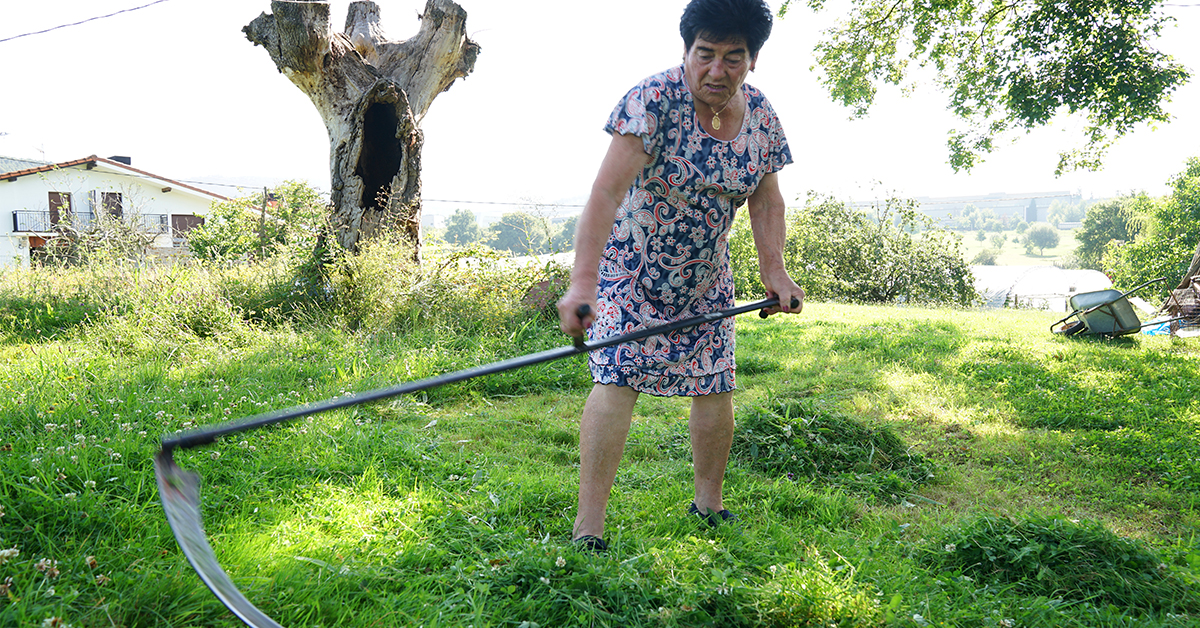Basque ethnography at a glance
We are here discussing the scythe, kodainea, used on farmsteads. It is a farming tool consisting of two parts: a shaft or snath, astea, that is usually rigid, and which was made out of chestnut strain in the past and later out of ash, leizarra. A curved blade, agoa, is attached to the snath and is used to work the tool. There are also two small grips to hold on to the tool. Scythes are available from ironmongers.
It is used to mow grass, cut back the brambles growing around the farmstead and, above all, to gather fodder for the cattle, gana-jatekoa. Different types of grass, including sekulabedarra, landa-bedarra, alfalfea… (meadow clover, grass, alfalfa…), are mown as fodder. When wheat was sown, scythes were also used to reap the cereal, even though the sickle, serrea, was used in yesteryear and whose work was cleaner. The grass must be cut at the right time, aroa dagoenean, before it has grown too high and has to be slightly damp so the blade slides though as it is jagged when dry, latza.
The tool should be sharpened, pikau, and honed at least twice a week, which takes around half an hour each time to make sure it does a good job. When the farmer goes to the meadow, they have a pail, potoa, tied to their waist, with water for the whetstone, zorroztarria, used to hone the edge of scythe from time to time, in the same way as with the sickle.
Each house has to have at least two scythes. No great difference in handling the scythe can be seen between men and women. There are skilful and clumsy people in either case. The technique takes practice, but it is important to cut close to the roots. The faster they go and they lower they cut, the better the result.
Cattle are fed on greenchop. However, the number of cows has now decreased considerably (from the 1990s), at least in the Gernikaldea area.
Cut grass was left to dry in the field and was kept in the haystack, sabaia. It then began to be bundled in bales. Later on, the custom spread of storing the hay in balls – sometimes wrapped in plastic – instead of bales. The livestock is fed with hay when fresh grass is not available.
There is another type of scythe, called ota-kodainea, which is used in the upland to obtain bedding for the animals, azpigarria; cut down the gorse…
Segundo Oar-Arteta
Labayru Fundazioa



